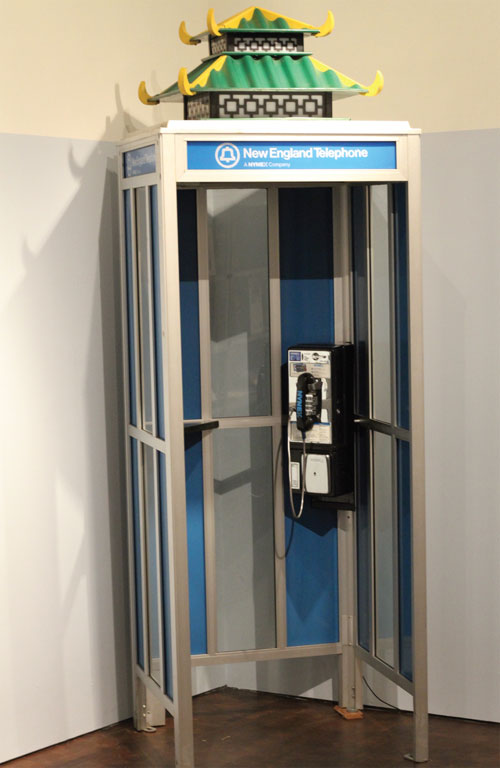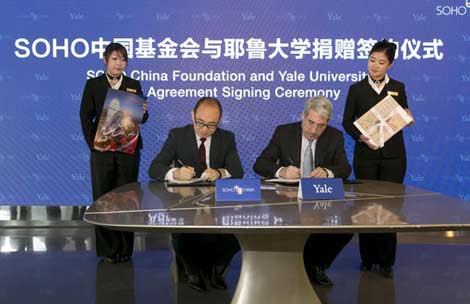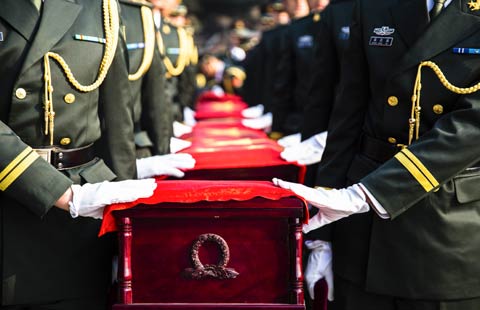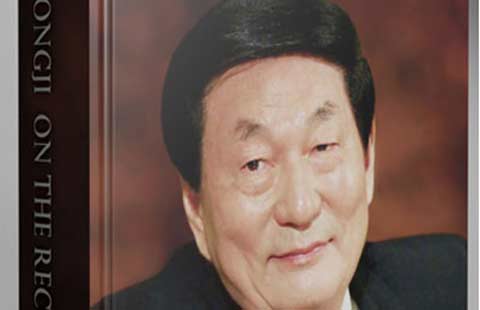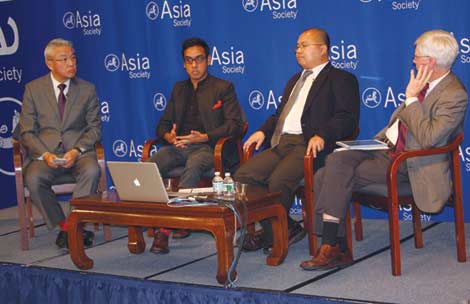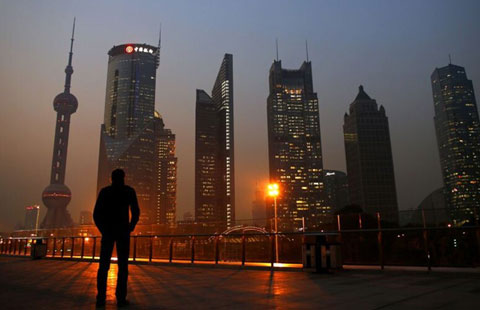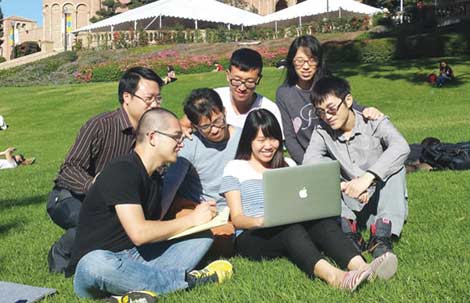NY museum honors history of Chinese in US
Updated: 2014-10-06 14:10
By Paul Welitzkin in New York(China Daily USA)
|
|||||||||
|
A phone booth with a Chinese-style rooftop. Provided to China Daily |
The Museum of Chinese in America (MOCA) in New York City has turned to its archives for an exhibit that chronicles the Chinese experience in the United States.
The exhibit - Waves of Identity: 35 Years of Archiving - contains more than 200 objects and stories that are organized in eight sections with a series of thought-provoking questions serving as a backdrop.
"Questions like Where does Chinatown end? How do you become American? and What does it mean to be Chinese? are designed to encourage the visitor to use the materials and objects to come up with their answers," said Beatrice Chen, director of MOCA's public programs.
Artifacts, documents, videos and oral histories were culled to symbolize and evoke the lives, complexities, and aspirations of Chinese-American communities in New York's Chinatown and beyond.
Material from MOCA's special collections and previous exhibitions have a starring role in the exhibit including intricate paper sculptures from The Fly to Freedom Collection: The Art of the Golden Venture Refugees, Recovering Chinatown: The 9/11 Collection, Marcella Chin Dear Collection, Hazel Ying Lee Collection,and theChinese Musical and Theatrical Association Collection.
The exhibit is in the Bloomberg Special Exhibitions gallery at the museum which is housed in a building designed by Maya Lin who created the Vietnam Memorial in Washington. It opened five years ago. The original museum was established in 1980.
"The museum started out as a Chinatown history project in the late 1970s," said Chen. "It includes the belongings from the first wave of Chinese immigrants who came to New York in the 1880s. Most of them were men who couldn't bring their families over because of the Exclusion Act."
In 1882 the ChineseExclusion Actwas signed into law by then US President Chester A. Arthur. It was designed to keep the Chinese out of the country by limiting Chinese immigration to 105 people a year with exceptions for merchants and scholars. It also denied the immigrants citizenship. The law remained on the books until 1943 and was probably ended because China was an ally of the US during World War II, said Chen.
"This was one of the most blatant discriminatory pieces of legislation in history," she added. "Unfortunately you can still see some of its effects in the current debate on immigration today."
The museum is in an area that was New York's original Chinatown bounded by Mott, Mulberry, Centre, and Doyers streets.
Chen said even though many of the visitors to the museum are of Asian descent it does draw in a sizable number from other ethnic backgrounds because New York is such a tourist mecca.
"The museum reveals the Chinese experience in the US and places it into a global context," she said. "I think this can appeal to anyone who is or has been an immigrant or family members who went through a similar experience. We also receive a lot of students who come on a school visit from the tri-state area."
Does the younger generation appreciate the sacrifices and hardships their ancestors had to make and endure?
"I think they do. And that's one of the purposes of the museum - to remind future generations of the sacrifice others had to make to so they can enjoy life now."
MOCA's Herb Tam, curator and director of exhibitions and Yue Ma, associate director of collections, will preside over a discussion of the exhibit on Oct 2 from 7 to 9 pm at the museum. Tam and Ma will discuss the process they used to develop and organize the exhibit.
The museum is also hosting an exhibition containing relief prints of Phillip Chen, a Midwest artist whose 15 relief etchings focus on his family and significant moments in Chinese American history. It runs until Oct 18.
MOCA is located at 215 Centre Street, between Howard and Grand streets. It is closed on Mondays.
paulwelitzkin@chinadailyusa.com
(China Daily USA 10/06/2014 page2)
- Xinjiang publishes anti-terror brochures
- Security pact sealed with Afghanistan
- President Xi encourages international cultural exchanges
- Premier Li: China willing to help Afghan infrastructure
- Chinese FM: China, Asia-Pacific become community of shared destiny
- Foreign minister remarks on possibility of China-Japan summit
Most Viewed
Editor's Picks

|

|

|

|

|

|
Today's Top News
VW defends safety of recalled New Sagitar
Former premier makes Hurun philanthropists list
Xinjiang publishes anti-terror brochures
SOHO endows $10m to Yale
Cook and Ma talk about partnership
Language a barrier to healthcare for Asian Americans
China businesses need innovation: VC
Security pact sealed with Afghanistan
US Weekly

|

|
